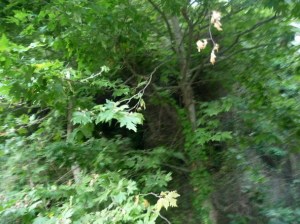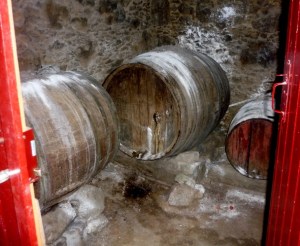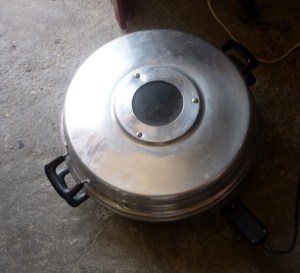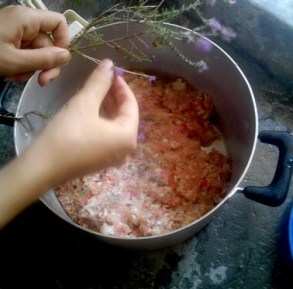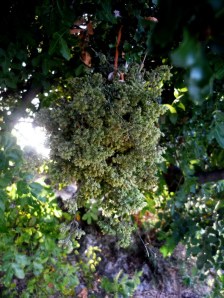Ηeraklion

Cretan cheese and yogurt are made with the milk of goat or/ and sheep. Cow milk is never used in their production.
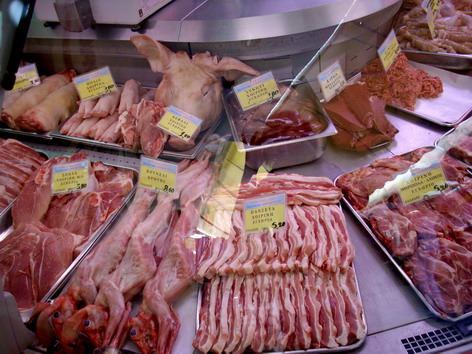
Jeladhia, a jelly made with the head and the feet of the pig used to be a popular New Year’s dish although today can be found all year round. Cretans are also fond of rabbit.

Apaki, a smoked delicacy since Byzantine times, is made with the meat around the pork’s kidneys.
Cut the meat into strips and leave them in wine vinegar for 4 days. Then cover them with a thin layer of salt. Sprinkle with black pepper. Hung the strips above smoldering olive embers or chestnut embers and aromatic herbs such as oregano (righani), sage, thyme, marjoran. Smoke for a period of time.

The Cretans also make use of the innards and intestines of sheep, lamb and goats. Stuffed intestines and innards wrapped with intestines are served to the most esteemed guests.

Kalitsounia, the small Cretan pies, are eaten as a snack or a meze or a light meal or a dessert that comes before and after meal ; they can be round, semicircular, rectangular or triangular; they contain various savoury or sweet fillings and they are fried, oven baked or baked on “satsi”, a domed metal piece that sits over the fire.

Lychnarakia (oil lamps) got their name from their shape.
Anevata kalitsounia (kalitsounia with yeast) are traditionally made in Sitia but you can find them in Heraklion as well.
2 k. flour
1 cup olive oil
3 +1 beaten eggs
1 2/3 normal sized glasses + 4 tbs sugar
160 gr baker’s yeast
3 glasses warm milk
2 k. anthotyros
4 tbs honey
¼ tsp mastic powder
1/2 tsp vanilla powder
sesame seeds
Dissolve the yeast in 2 glasses warm milk, add 2 tbs sugar and 2 cups flour to make a batter. Let it rise.
Put the oil in a bowl and mix it with the sugar, vanilla, mastic. Add 3 eggs and mix well. Add 1 glass of milk and the leaven. Mix very well. Add the remaining flour and knead until you have a soft, elastic dough.
Let it rise.
Mix anthotyros, 2 tbs sugar and 2 tbs honey.
Take small pieces of dough and roll them into 10 cm circles. Place a teaspoon of the filling in the centre of each circle. Fold the two opposite sides in towards the centre of each anevato kalitsouni, to make squares. Put the kalitsounia on baking sheet and let them to rise.
Brush them with beaten egg, sprinkle with sesame seeds and bake until slightly golden (15- 20 minutes, moderate oven)
Rethymno

Bakery is the best place to research the diversity of Cretan pies and rusks.
If bread is for Greeks so essential that no meal can be conceived without it, Cretan rusk is a way of life. Made with barley wholemeal flour or wheat or mixture of varying amounts of wheat, barley and oat flour, rusk was an important element in the Cretan farming diet, when the needs of life did not allow the women to make bread every day. However, the making of rusks was also a labor – intensive process since the total amount should feed the whole family for many weeks and careful double- baking was necessary.
The traditional rusks are very hard but can be dunked in water or be covered with grated fresh tomato and olive oil, turning into a softer taste sensation.
Rusks are of various sizes and shapes: the ring is known as kouloura or koukouvayia (owl), the barley circle which is cut in half is called dakos or ntakos. Both are perfect for dipping in fish or meat soup. They are delicious when wet under the tap for a few seconds, drizzled with olive oil from unripe olives (agourolado) and sprinkled with salt and Cretan oregano or topped with grated summer tomatoes, drizzled with virgin olive oil and topped with goat myzithra cheese ( the traditional soft cheese from Chania). To give a final touch, black olives and oregano should be added.
There are also lovely sweet or demi-sweet rusks made from wheat flour and flavored with coriander, anise, cinnamon, sesame seeds, orange juice, grape juice, wine, almonds, currants etc.
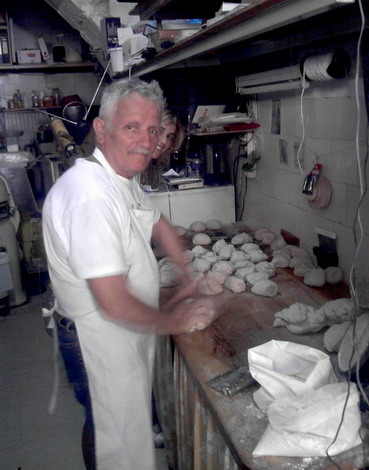
The Gasparis baker shop is in the centre of medieval town of Rethymno, behind the Rimondi fountain. The baker keeps his door open and you can see how he makes rusks.

A popular spoon sweet, a liqueur and a refreshing soft drink is made from sour cherries.
Chania


The white meat of dusky grouper makes great soups, grilled dishes and stews.
Its head is used in soups and stews as well. Baking it with okra is a great idea for a traditional Cretan meal .
Dusky grouper’s head and okra
For 1 kilo fish- head (cut in pieces) you need 1kilo okra, ½ cup olive oil, 2 cups grated fresh tomatoes, ½ cup chopped onions, ½ cup vinegar.
Wash the okra, cut off the stems, put them in a bowl and sprinkle them with vinegar. Leave them in the sun for 3 hours.
Salt the fish- head and place it in the middle of a baking pan. Mix the onion, tomatoes, salt and pepper with the okra. Place them around the fish-head. Add a little water and bake in moderate oven.
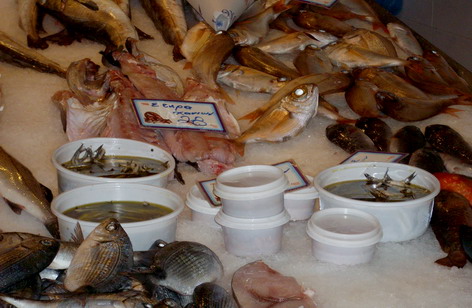
Sea urchin roe is the ultimate treat of sea. It is eaten raw, as well as being added to pasta and risotto. Sea urchins in plastic “yoghurt” pots are often available in fish markets.
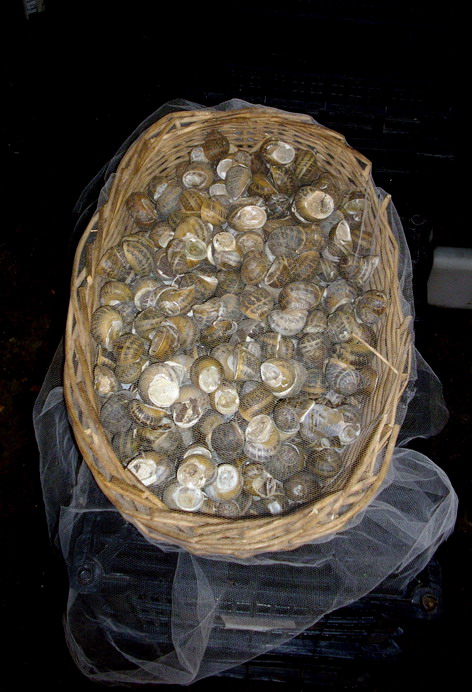
Snails is a common dish in Crete since Minoan times. Cretan snails are very tasty because their food is based on the aromatic herbs of the island.
Sympetherio
½ k. snails
¾ k. aubergines, cut in small pieces
1 cup chondros (ground wheat) or xinochondros*
½ cup finely chopped onion
3 garlic cloves, chopped
1 ½ cups ripe tomatoes, finely chopped
salt and pepper
Heat the olive oil in a saucepan and saute the aubergines, onions and garlic for 1-2 minutes. Add the tomatoes and snails, season with salt and cook for 5 minutes. Pour in ½ cup of water and cook for 5 minutes. Add 2 – 2 ½ cups of water and bring to the boil. Add the chondros, season with salt and pepper and cook in low fire, stirring, until chondros cooked.

One of the typical products of Lesvos is salted fish. Here you see the famous salt cured anchovies of Kalloni (Lesvos) .

Typical products of Chania: olives, cheese, honey, rusks, raisin cakes.
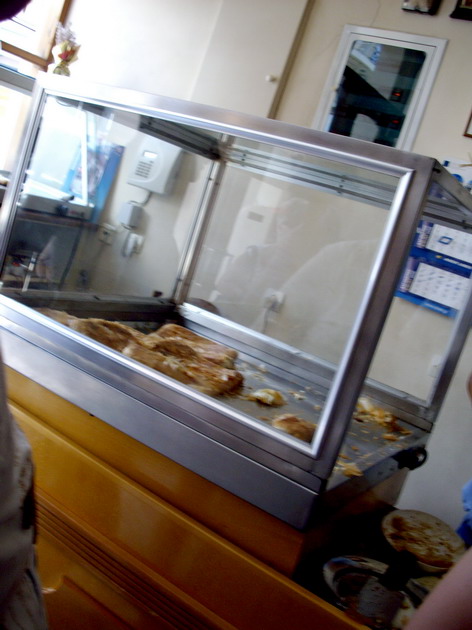

One should never miss having coffee at the old Venetian harbour after arriving at Chania by boat early in the morning.
Then, one should never miss trying the famous Chaniotiki bougatsa. The feeling is awesome.
There are bougatses (plural of bougatsa) with several different fillings made all over Greece but contrary to Turkish poğaça which is a savory pastry made out of dough, Greek bougatsa is a sweet or savory pie made with a phyllo pastry, similar to börek. What exactly is a Chaniotiki bougatsa? Put it simply, it is a baked savory -sweet pie, a filling of local fresh cheese sandwiched between thin sheets of dough. It is served cut in small square pieces and is eaten with sugar and (optional) cinnamon.
Noumerous bougatsa shops were located throughout the island until the large scale population exchange between Greece and Turkey. Most of them were held by Turkish or Moslem Cretans. On 1924 a Moslem Chaniotis sold his bougatsatsidiko (bougatsa shop) to Iordanis’ father in law. The seller also taught the buyer the art of making bougatsa. Soon Iordanis became a symbol of Chaniotiki gastronomy. Today, bougatsa Iordanis has three branches in Chania while Chaniotiki bougatsa is another well known brand name. The bougatsa shops sell bougatsa and nothing else, apart from greek coffee, nescafé, french coffee and soft drinks.
Let us take a look at how chaniotiki bougatsa is made:
Anthony Bourdain visits Bougatsa Chanion
*Xinochondros: It is made with ground wheat (chondros) and sour sheep’s or goat’s milk. It is eaten fresh or dried in the sun or in the shade.
The next few posts will be automatically published to the site as I am going to take a short break from blogging. In the meantime I will not be able to visit your blogs or answer your comments.Thanks for your patience!
See you in a couple of weeks….


























